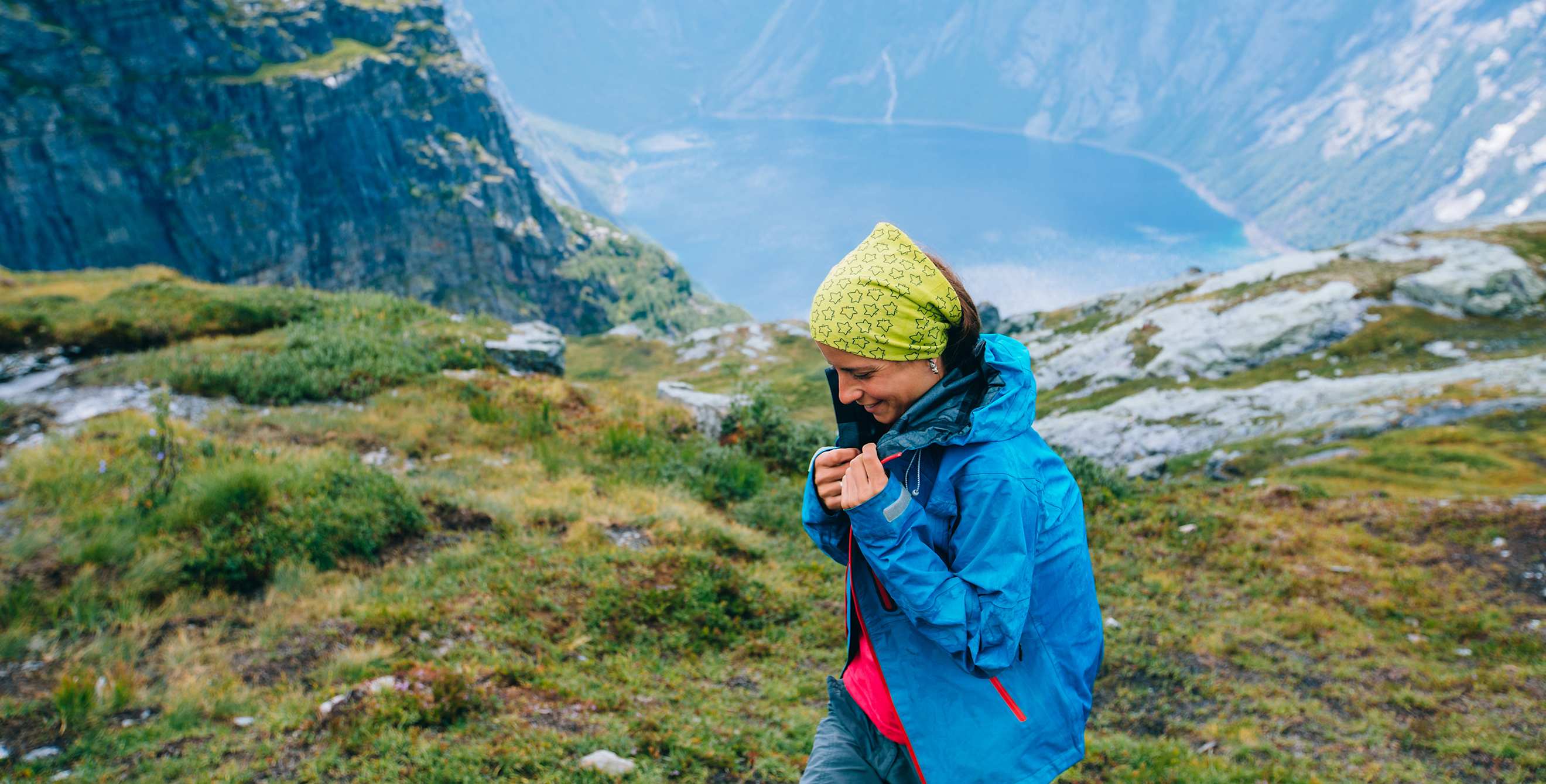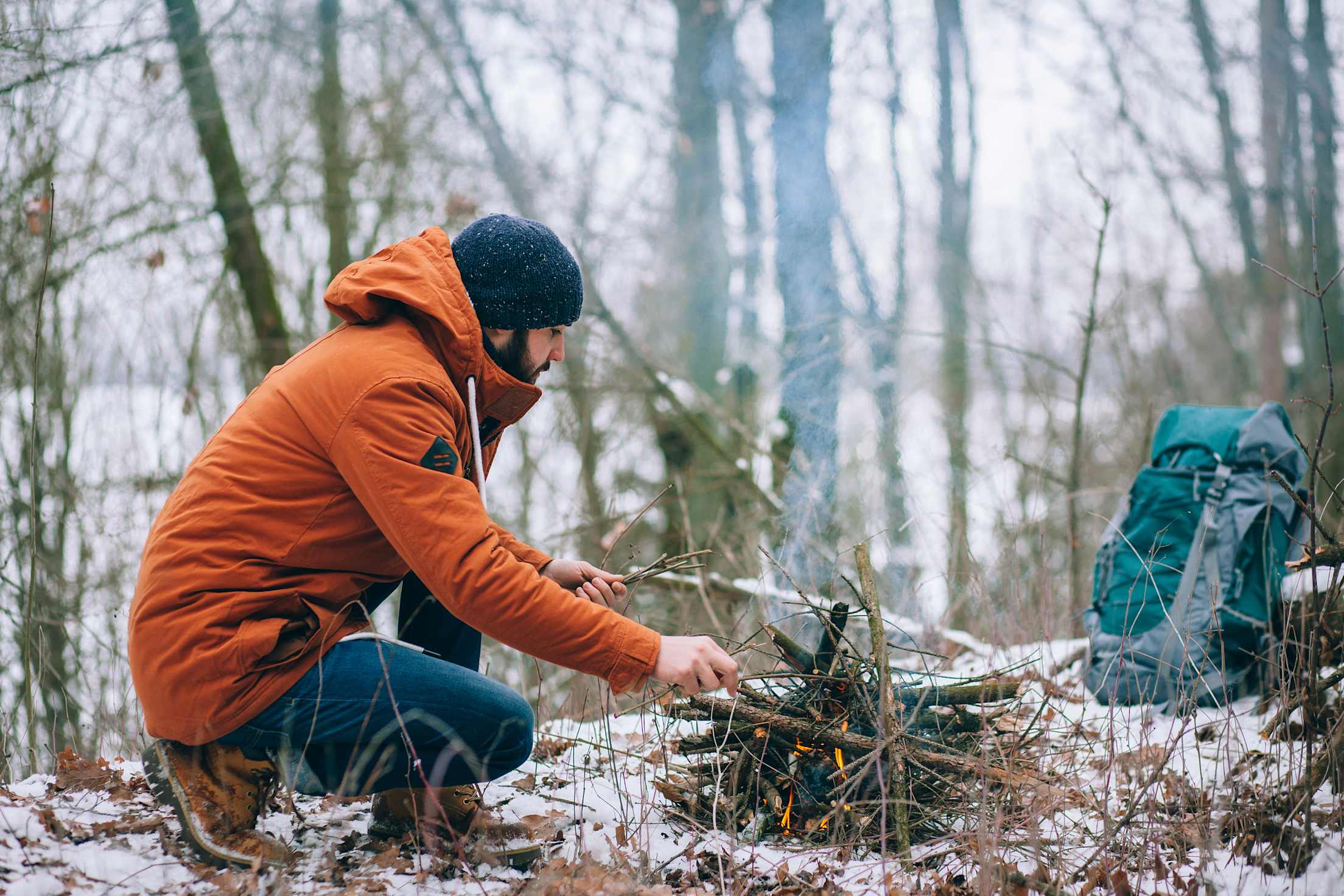
How to Stay Dry and Comfortable Outdoors
From hot-weather camping clothes to special snow gear, here’s what to bring for every climate.

As the saying goes, there’s no such thing as bad weather—only bad gear. If you’ve equipped correctly, you can be comfortable almost anywhere. Whether you’re hiking in the heat, preparing for potential downpours, or winter camping, these three simple rules will serve you well, so you can fully enjoy your adventures.
1. Stay cool.
Keeping cool can be a challenge when the mercury rises. The most essential thing is to drink enough water because a dehydrated body has a harder time regulating its temperature. Consuming plenty of liquids also helps cool you from the inside.
Layering doesn’t work as well in the heat—there’s only so much you can take off—so wear breathable, lightweight clothing, including shorts and SPF-rated sun shirts, since the sun’s UV rays can damage your skin in as little as 15 minutes, according to the Centers for Disease Control. The CDC also advises to stay in the shade where you can, especially during midday hours, or create your own by wearing a wide-brimmed hat or by setting up umbrellas, sunshades, or tarps.
If you’re burning up, wet your hair or clothing, avoid strenuous activity, and sleep off the hot ground in a hammock or cot. Wear sunscreen, and do everything you can to keep from getting scorched. It’s harder to feel cool and comfortable when you have a sunburn.

2. Stay dry.
Bring rain gear—a jacket and pants, at least—even if rain isn’t in the forecast. If you’re expecting precipitation, test your gear in the shower to make sure it’s truly waterproof. Rubber or polycoated materials repel moisture the best, but they can trap sweat and condensation inside the garment when you’re working hard. A breathable waterproof material (like Gore-tex) works really well in drier climates when you are hiking, biking, or otherwise sweating, but it does have its limits in wetter environments.
Smart Tip: Refresh the outer waterproof layer of older apparel with a thorough cleaning and the application of a durable waterproof coating from a company such as Granger’s, Fjällräven, or Nikwax.
Buy or borrow a high-quality waterproof tent, or make your current tent more water-resistant by sealing its seams and reapplying its coating. (REI offers these handy instructions for waterproofing a tent.) Use a tarp or a rainfly for added protection or to cover your eating or cooking area.
Pack your clothes and sleeping bag in a waterproof bag: “A garbage bag inside a stuff sack works really well,” offers Heather Wicksted, an outdoor-travel blogger who runs Reason2Roam.com.
If your clothes get wet, from either rain or sweat, change out of them immediately—especially your base layer—and never sleep in anything damp. Moisture on your clothes or sleeping bag can make it difficult to stay warm.

3. Stay warm.
To keep cozy in colder climes, dress in layers. The layer closest to your skin, your base layer, should fit snugly and be made of wicking materials like wool or polyester. Cotton that gets wet, even with sweat, is miserable to wear (it’s heavy and chafes) and can be dangerous in the outdoors since it dries slowly and can increase your risk of hypothermia in cold temperatures.
Other cold-weather essentials include thermal long underwear or leggings, a fleece sweater or vest, and a quality lightweight or insulated jacket as well as gloves, wool socks, and a beanie. A thick wool sweater or fleece pants can also be worn for added heat. If you expect the temperature to drop overnight, sleep in wicking base layers and a beanie to stay warm and dry. Double check that your sleeping bag is rated for the appropriate cold temperatures—if not, you can add a thermal sleeping bag liner to extend the bag’s range.
Smart Tip: Tuck the next day’s clothes into your sleeping bag below your feet, so they’ll be warm when you wake up in the morning.
Set up your tent or sleeping bag in a place that gets morning sun. Even in dry conditions, a rainfly or tarp over your tent can trap heat from the sun to help stave off the cold.
Do your best to insulate yourself from the ground. Sleeping on a foam or inflatable pad will keep you warmer than a sleeping bag alone. If you frequently go on cold-weather trips or have trouble staying warm at night, consider investing in a sleeping pad with a high R-value—a rating of how well the pad retains your body heat—or low temperature rating.